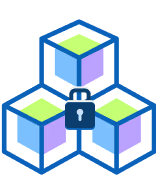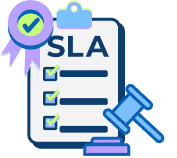
.avif)
Apply security patches directly to the existing library versions your team is using.

.avif)
Allow your team to address vulnerabilities without altering their development roadmap.
.avif)
.avif)
Enable upgrades to be planned and executed at your team's convenience.


.avif)

Strengthen your supply chain with patches for both direct and transitive dependencies.



Secure your existing images without upgrading—even if you're running older distributions.



Receive security patches post-EOL for platforms like CentOS and RHEL 6, and continue to meet compliance standards.



Streamline the process of fixing security issues in old or legacy code. Address vulnerabilities in difficult-to-patch applications—even those outside your control.

.avif)

Maintain vulnerability-free images to ensure you meet your customers' SLA requirements and successfully pass any security audit, including FedRAMP, PCI DSS 4.0, and NYDFS 500.

.avif)
.avif)

In this webinar, we'll explore how security teams can leverage backporting of security fixes to bypass challenging upgrades and avoid breaking changes.


DORA is reshaping application security expectations across the EU financial sector. This blog shows how Seal Security helps organizations meet DORA Article 10 by delivering open source patching, tracking third-party components, and securing legacy code without disrupting development.


In this eBook, we outline how FedRAMP sets clear guidelines to ensure all software components—including open source libraries, application dependencies, container images, and OS components—are kept secure. This ebook will help you stay ahead of audits, slash your vulnerability backlog, and simplify monthly reporting. Download the ebook to see how Seal Security helps cloud providers meet FedRAMP compliance—securely, efficiently, and continuously.
